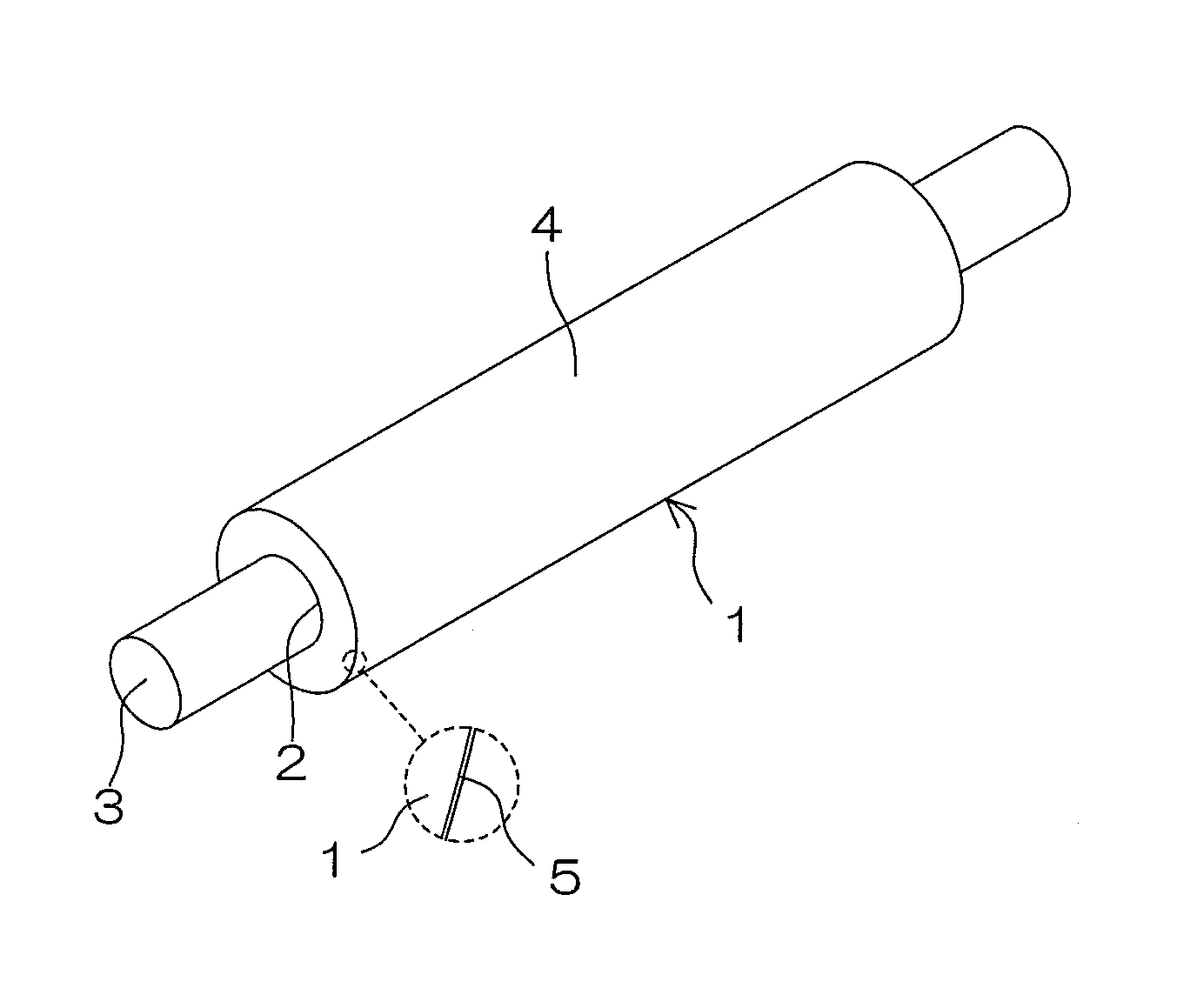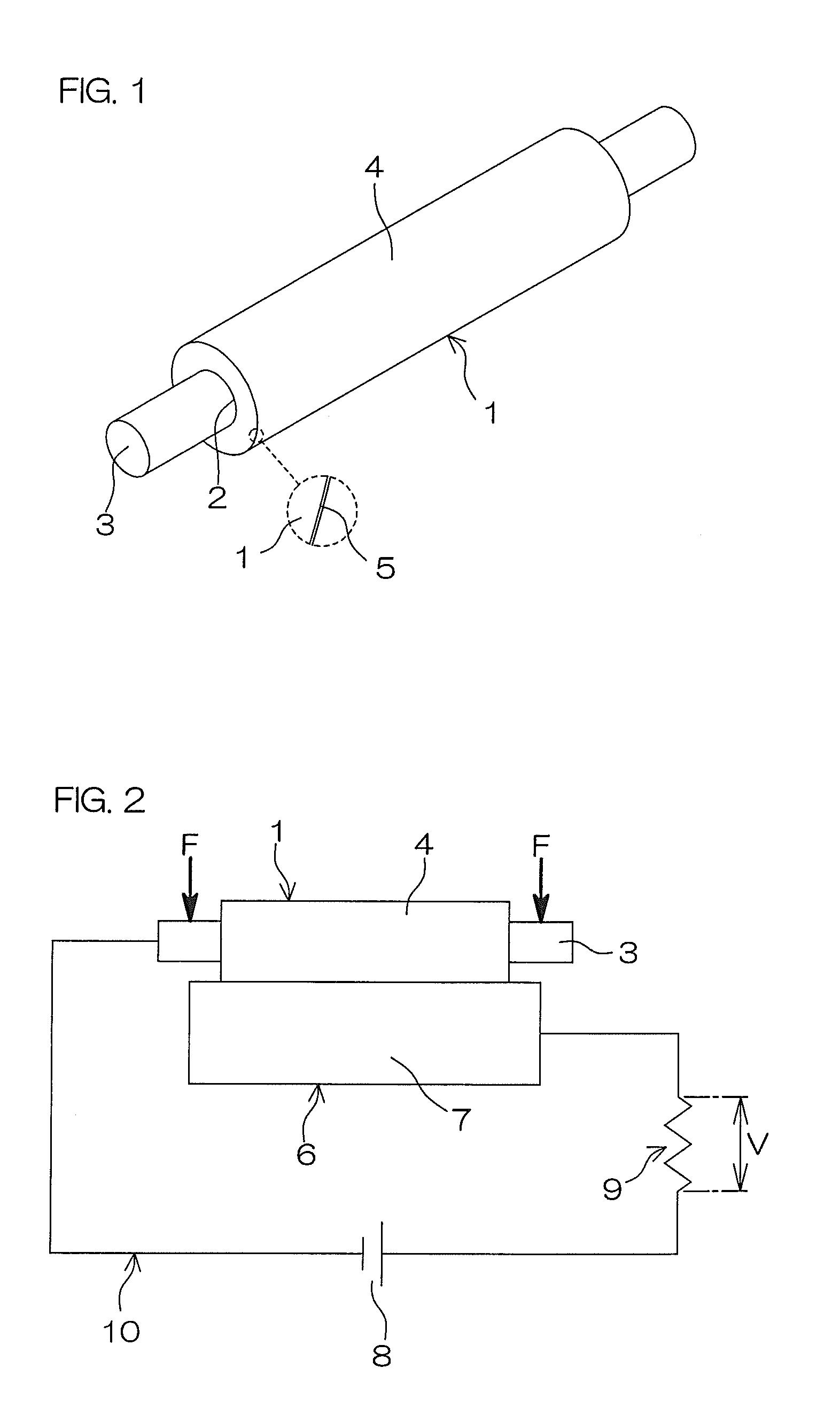Semiconductive roller
- Summary
- Abstract
- Description
- Claims
- Application Information
AI Technical Summary
Benefits of technology
Problems solved by technology
Method used
Image
Examples
example 1
Preparation of Rubber Composition
[0204]A rubber component was prepared by blending 50 parts by mass of an SBR (non-oil-extension type JSR1502 available from JSR Co., Ltd. and having a styrene content of 23.5%), 20 parts by mass of a GECO (EPION (registered trade name) 301 available from Daiso Co., Ltd. and having a molar ratio of EO / EP / AGE=73 / 23 / 4) and 30 parts by mass of a CR (SHOPRENE (registered trade name) WRT available from Showa Denko K.K.) The proportion of the SBR was 50 parts by mass and the proportion of the GECO was 20 parts by mass based on 100 parts by mass of the overall rubber component.
[0205]While 100 parts by mass of the rubber component was simply kneaded by means of a Banbury mixer, ingredients shown below in Table 1 except the crosslinking component were added to the rubber component, and then the crosslinking component was added to and further kneaded with the resulting mixture. Thus, a rubber composition was prepared.
TABLE 1IngredientsParts by massIonic salt I0...
example 7
[0212]A rubber composition was prepared in substantially the same manner as in Example 1, except that 0.2 parts by mass of lithium bis(trifluoromethanesulfonyl)imide (ionic salt II) based on 100 parts by mass of the overall rubber component was blended instead of the ionic salt I. Then, a semiconductive roller was produced in the same manner as in Example 1 by using the rubber composition thus prepared.
[0213]The roller resistances of each of the semiconductive rollers produced in Examples and Comparative Examples were measured in the lower temperature and lower humidity environment (LL at a temperature of 10° C. at a relative humidity of 20%), in the ordinary temperature and ordinary humidity environment (NN at a temperature of 23° C. at a relative humidity of 55%) and in the higher temperature and higher humidity environment (HH at a temperature of 30° C. at a relative humidity of 80%). In Tables 2 and 3, the roller resistances are shown in the form of log R.
[0214]Based on the meas...
PUM
| Property | Measurement | Unit |
|---|---|---|
| Fraction | aaaaa | aaaaa |
| Percent by mass | aaaaa | aaaaa |
| Percent by mass | aaaaa | aaaaa |
Abstract
Description
Claims
Application Information
 Login to View More
Login to View More - R&D
- Intellectual Property
- Life Sciences
- Materials
- Tech Scout
- Unparalleled Data Quality
- Higher Quality Content
- 60% Fewer Hallucinations
Browse by: Latest US Patents, China's latest patents, Technical Efficacy Thesaurus, Application Domain, Technology Topic, Popular Technical Reports.
© 2025 PatSnap. All rights reserved.Legal|Privacy policy|Modern Slavery Act Transparency Statement|Sitemap|About US| Contact US: help@patsnap.com



